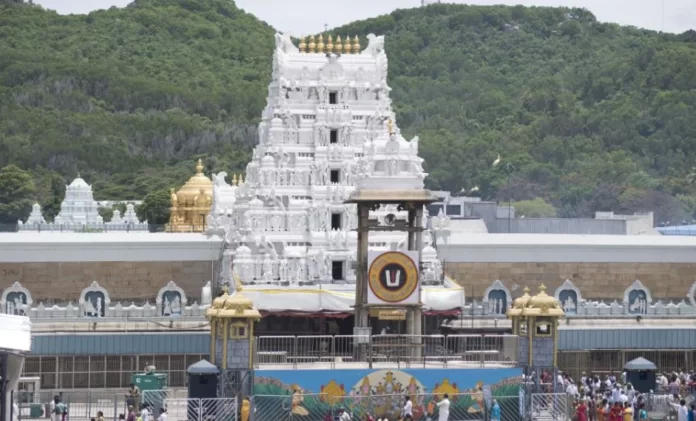Tirupati Balaji Temple is located in the town of Tirupati in the Chittoor district of Andhra Pradesh, India. Here are 21 Facts About Tirupati Balaji Temple.
The Tirupati Balaji Temple, also known as Sri Venkateswara Temple, is a famous Hindu temple dedicated to Lord Venkateswara, an incarnation of Lord Vishnu. The temple is one of the most visited and wealthiest temples in the world.
The temple complex comprises several structures, including the main sanctum sanctorum, a gopuram (tower), and various mandapas (halls). The deity of Lord Venkateswara is enshrined in the main sanctum, and devotees offer prayers and seek blessings.
Tirupati Balaji Temple attracts millions of devotees from all over the world who come to offer their prayers and participate in various rituals and ceremonies. The temple is renowned for its rich spiritual heritage, architectural grandeur, and the belief that worshipping Lord Venkateswara can bestow blessings, prosperity, and salvation.
Facts About Tirupati Balaji Temple
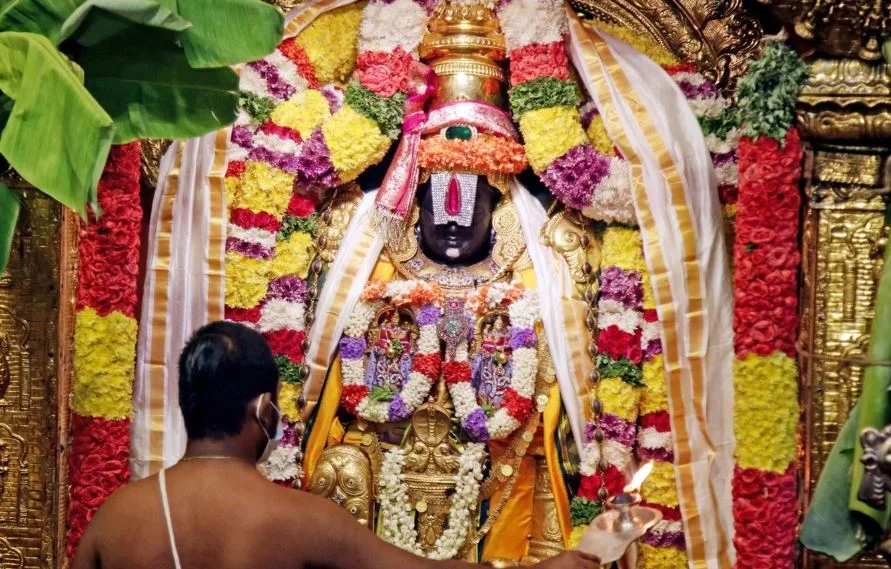
Here are 21 interesting Facts about Tirupati Balaji Temple.
1. Historical Facts about Tirupati Balaji Temple
The Tirupati Balaji Temple, also known as the Sri Venkateswara Temple, is one of the most revered Hindu pilgrimage sites in the world.
- The temple is dedicated to Lord Venkateswara, an incarnation of Lord Vishnu.
- It is located in the town of Tirupati in the state of Andhra Pradesh, India.
- The temple has a rich historical and cultural significance, dating back centuries.
- It attracts millions of devotees from around the globe who seek the blessings of Lord Venkateswara.
2. Mythological Facts about Tirupati Balaji Temple
The origins of the Tirupati Balaji Temple can be traced back to ancient times, mentioned in various Hindu scriptures and Puranas.
It is believed that Lord Venkateswara resided on the sacred Tirumala Hill, where the temple is located, during the Kali Yuga (current era).
The temple complex has undergone several renovations and expansions over the centuries to accommodate the increasing number of devotees.
3. Dravidian Architecture
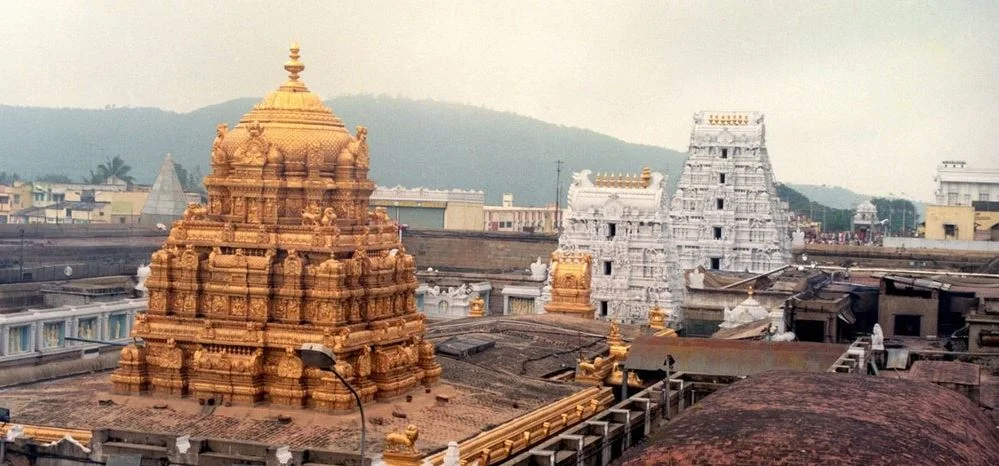
The Tirupati Balaji Temple is a masterpiece of Dravidian architecture, characterized by its intricate carvings, gopurams (tower gateways), and pillared halls.
The temple complex features several distinct structures, including the main sanctum sanctorum, pillared halls, and various mandapams (pavilions).
The gopuram at the main entrance is adorned with colorful sculptures depicting mythological stories and deities.
The architectural brilliance of the temple is a visual treat for visitors and showcases the skilled craftsmanship of the artisans.
4. Seven Hills of Tirumala
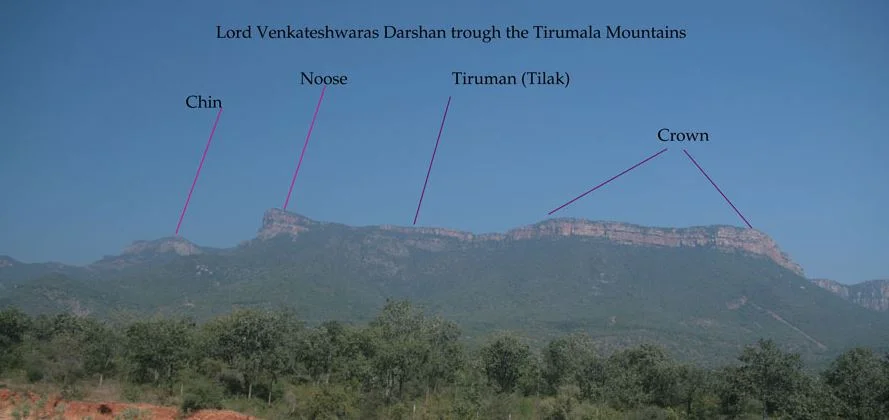
The temple is situated on Tirumala Hill, one of the seven hills collectively known as the “Seven Hills of Tirumala.”
These hills are considered sacred and are believed to represent the seven hoods of the divine serpent Adisesha on which Lord Vishnu rests.
Devotees undertake a pilgrimage to climb the hills by foot to reach the temple, a journey known as the “Tirumala Tirupati Devasthanams (TTD) Trek.”
The scenic beauty and spiritual aura of the hills enhances the overall pilgrimage experience.
5. Vaikunta Ekadasi
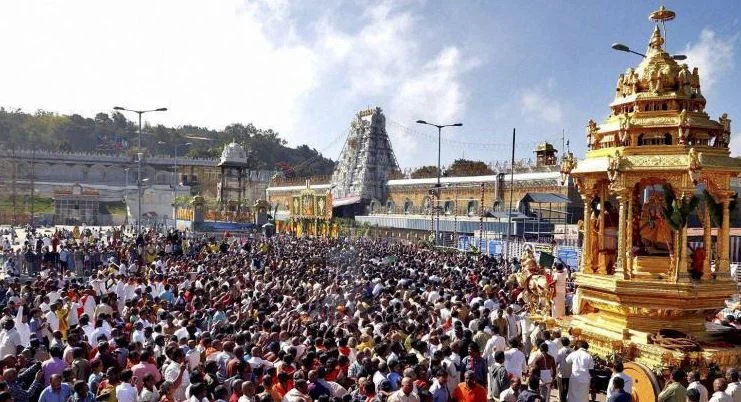
Vaikunta Ekadasi is a significant festival celebrated at the Tirupati Balaji Temple.
It marks the celestial wedding of Lord Venkateswara and Goddess Lakshmi.
The festival attracts a massive crowd of devotees who gather to witness the grandeur and participate in the celebrations.
The main highlight of the festival is the opening of the “Vaikunta Dwaram,” a special gate symbolizing the gateway to Vaikunta, the abode of Lord Vishnu.
Devotees believe that passing through this gate brings them closer to attaining salvation.
6. Prasadam Facts about Tirupati Balaji Temple
The Tirupati Balaji Temple is renowned for its unique prasadam (holy food) known as “Tirupati Laddu.”
The laddu is considered a sacred offering to Lord Venkateswara and is distributed as prasadam to devotees.
The laddu is made from flour, sugar, ghee, and various other ingredients, prepared with utmost devotion.
It is believed that consuming the Tirupati Laddu brings blessings and good fortune.
The prasadam distribution is efficiently managed by the temple authorities, ensuring that every devotee receives it.
7. Hair Offering Facts about Tirupati Balaji Temple
Another unique aspect of the Tirupati Balaji Temple is the tradition of “tonsuring” or shaving one’s hair as an offering to the deity.
Devotees, both men and women, voluntarily shave their heads as a symbol of surrendering their ego and offering their devotion to Lord Venkateswara.
The temple has dedicated areas where the hair is shaved, and the process is carried out by trained barbers.
The collected hair is auctioned, and the proceeds are utilized for various temple maintenance and welfare activities.
Tonsuring is considered a significant act of devotion and is followed by many devotees as part of their pilgrimage.
8. Hundi (Donation Box)
The Tirupati Balaji Temple receives an immense amount of donations from devotees in the form of cash, jewelry, and other valuables.
The donations are made in the hundi, a large donation box located within the temple premises.
The funds collected through the hundi are utilized for the temple’s maintenance, development, and various charitable activities.
The hundi is managed with utmost transparency and under strict security measures to ensure the safety of the offerings.
Devotees believe that making donations in the hundi brings blessings and helps in the fulfillment of their wishes.
9. Divya Darshan and Sevas
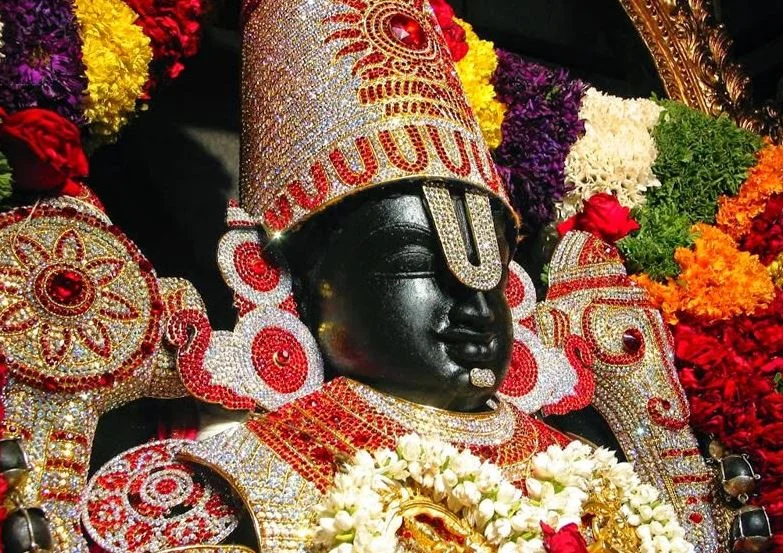
The Tirupati Balaji Temple offers different types of darshans (viewing the deity) and sevas (worship services) for devotees.
The general darshan allows devotees to have a glimpse of the deity from a distance.
Special darshans like the “Sarva Darshan,” “Sudarshan Darshan,” and “Divya Darshan” offer quicker access and shorter waiting time for devotees.
Sevas like “Suprabhata Seva,” “Archana Seva,” and “Sahasra Deepalankara Seva” involve elaborate rituals and offerings performed on behalf of devotees.
Devotees can book these sevas in advance and participate in the divine services conducted at the temple.
10. Akasa Ganga
Akasa Ganga is a sacred waterfall located near the Tirupati Balaji Temple.
It is believed that the water of Akasa Ganga originates from Lord Venkateswara’s feet and flows through the temple complex.
Devotees take a holy dip in Akasa Ganga before entering the temple premises as a purification ritual.
The water is also used for various religious ceremonies and rituals conducted at the temple.
The serene ambiance and natural beauty surrounding Akasa Ganga add to the spiritual experience of devotees.
11. Sri Vari Museum
The Tirupati Balaji Temple houses the Sri Vari Museum, which showcases a vast collection of artifacts, sculptures, paintings, and photographs related to the temple’s history and mythology.
The museum provides insights into the temple’s architectural evolution, rituals, festivals, and the life of Lord Venkateswara.
Visitors can explore the museum to learn about the temple’s cultural significance and the impact of Lord Venkateswara’s presence on devotees’ lives.
The exhibits in the museum offer a glimpse into the rich heritage and devotion associated with the temple.
The Sri Vari Museum serves as an educational and informative space for both devotees and tourists.
12. Alipiri and Srivari Mettu
Alipiri and Srivari Mettu are two popular trekking paths that lead to the Tirupati Balaji Temple.
Devotees who wish to undertake the spiritual journey on foot can choose either of these paths.
Alipiri is located in Tirupati, while Srivari Mettu is situated in Srinivasa Mangapuram, around 15 kilometers away from Tirupati.
The paths are well-maintained and have amenities like restrooms, drinking water, and medical aid for the convenience of devotees.
Trekking through Alipiri or Srivari Mettu is considered a sacred act and is believed to invoke the blessings of Lord Venkateswara.
13. Vahana Sevas
The Tirupati Balaji Temple is renowned for its grand Vahana Sevas, where the deities are taken out on procession in beautifully decorated vahanas (vehicles).
The most famous Vahana Seva is the “Garuda Vahana Seva,” where Lord Venkateswara is seated on a golden Garuda (eagle) vahana.
Other vahanas used for processions include Hanumantha Vahana, Sesha Vahana, and Hamsa Vahana, among others.
Devotees eagerly wait to witness these Vahana Sevas and offer their prayers to the deities during the processions.
The Vahana Sevas add a festive charm to the temple and allow devotees to have a closer darshan of the divine forms.
14. Annadanam (Free Food Distribution)
The Tirupati Balaji Temple is known for its Annadanam program, where free meals are served to devotees.
The temple operates one of the world’s largest kitchens to prepare and distribute food to thousands of devotees every day.
Devotees can partake in the Annadanam and receive a wholesome meal, irrespective of their caste, creed, or social status.
The Annadanam initiative is run with the support of volunteers and generous donations from devotees.
The act of serving and partaking in the sacred prasadam strengthens the spirit of unity and equality among devotees.
15. Nitya Annadanam
In addition to the regular Annadanam, the Tirupati Balaji Temple also provides Nitya Annadanam, which refers to daily free meals served to devotees.
The temple ensures that no one goes hungry by offering nutritious meals to pilgrims throughout the year.
The Nitya Annadanam initiative is funded through donations from devotees and philanthropic organizations.
It serves as a testimony to the temple’s commitment to serving humanity and spreading the message of compassion and selfless service.
Devotees have the opportunity to contribute to this noble cause by making donations specifically for the Nitya Annadanam program.
16. Accommodation Facilities
The Tirupati Balaji Temple provides accommodation facilities to devotees who wish to stay near the temple during their pilgrimage.
The temple operates several guesthouses and cottages where devotees can book rooms for their stay.
The accommodation options range from simple dormitories to well-furnished rooms, catering to different budget preferences.
The temple authorities ensure that devotees have a comfortable and convenient stay, offering basic amenities and services.
Staying in close proximity to the temple allows devotees to have multiple visits and participate in various sevas and rituals.
17. Sudarshanam Facts about Tirupati Balaji Temple
The Sudarshanam program at the Tirupati Balaji Temple offers devotees the opportunity to witness the morning rituals of the deity.
Devotees can participate in the Sudarshanam seva, where they can witness the process of waking up Lord Venkateswara and preparing him for the day.
This seva allows devotees to have an intimate and close darshan of the deity during the early hours of the morning.
The Sudarshanam seva is considered highly auspicious and provides a spiritually uplifting experience.
18 Vastra Seva
Vastra Seva is a unique seva conducted at the Tirupati Balaji Temple where devotees can offer new clothes to Lord Venkateswara.
Devotees can bring traditional silk clothing or “vastrams” to be adorned by the deity during the seva.
The Vastra Seva signifies the act of dressing and decorating the deity, symbolizing the devotee’s love and devotion.
It is believed that offering new clothes to the deity brings blessings and good fortune to the devotee and their family.
The Vastra Seva is conducted with great reverence, and devotees can witness the deity being adorned with their offerings.
19. Sub-Temples within the Complex
The Tirupati Balaji Temple complex houses several sub-temples dedicated to various deities and divine personalities.
These sub-temples include the Sri Padmavathi Ammavari Temple, Sri Varahaswamy Temple, Sri Lakshmi Narasimha Temple, and Sri Hanuman Temple, among others.
Each sub-temple has its own significance and attracts devotees who seek the blessings of specific deities.
Pilgrims visiting the main temple also pay their respects and offer prayers at these sub-temples, enriching their overall spiritual experience.
20. Special Entry Darshan
The Tirupati Balaji Temple offers a Special Entry Darshan facility for devotees who wish to have a quicker and more convenient darshan experience.
This facility allows devotees to bypass the regular queues and have a direct darshan of the deity.
The Special Entry Darshan is available for a fee, and devotees can book their slots in advance through the official website or designated ticket counters.
It is an ideal option for devotees with time constraints or those who prefer a more expedited darshan experience.
The Special Entry Darshan ensures a seamless and hassle-free visit to the temple for devotees.
21. Festivals Facts about Tirupati Balaji Temple
The Tirupati Balaji Temple celebrates various festivals and special occasions throughout the year.
Some of the prominent festivals include Brahmotsavam, Vaikunta Ekadasi, Rathotsavam, and Janmashtami.
During these festivals, the temple witnesses a significant influx of devotees who come to witness the grand processions, rituals, and cultural performances.
The festive atmosphere, devotional fervor, and the divine aura of the temple during these celebrations are truly captivating.
Participating in the temple’s festivals allows devotees to immerse themselves in the rich traditions and experience the spiritual vibrancy of the Tirupati Balaji Temple.
How to Reach Tirupati Balaji Temple?
Tirupati is well-connected by road, rail, and air, and the temple is situated atop the Tirumala Hills, approximately 26 kilometers northwest of Tirupati town.
Devotees often undertake the sacred pilgrimage of climbing the hills by foot, known as “Tirumala Tirupati Devasthanams (TTD) Seva.”
Related Posts
- 21 Facts About Vaishno Devi
- 19 Facts About Amarnath
- 21 Facts About Kedarnath
- 27 Facts About Badrinath
- 16 Facts About Gangotri
- 17 Facts About Yamunotri
